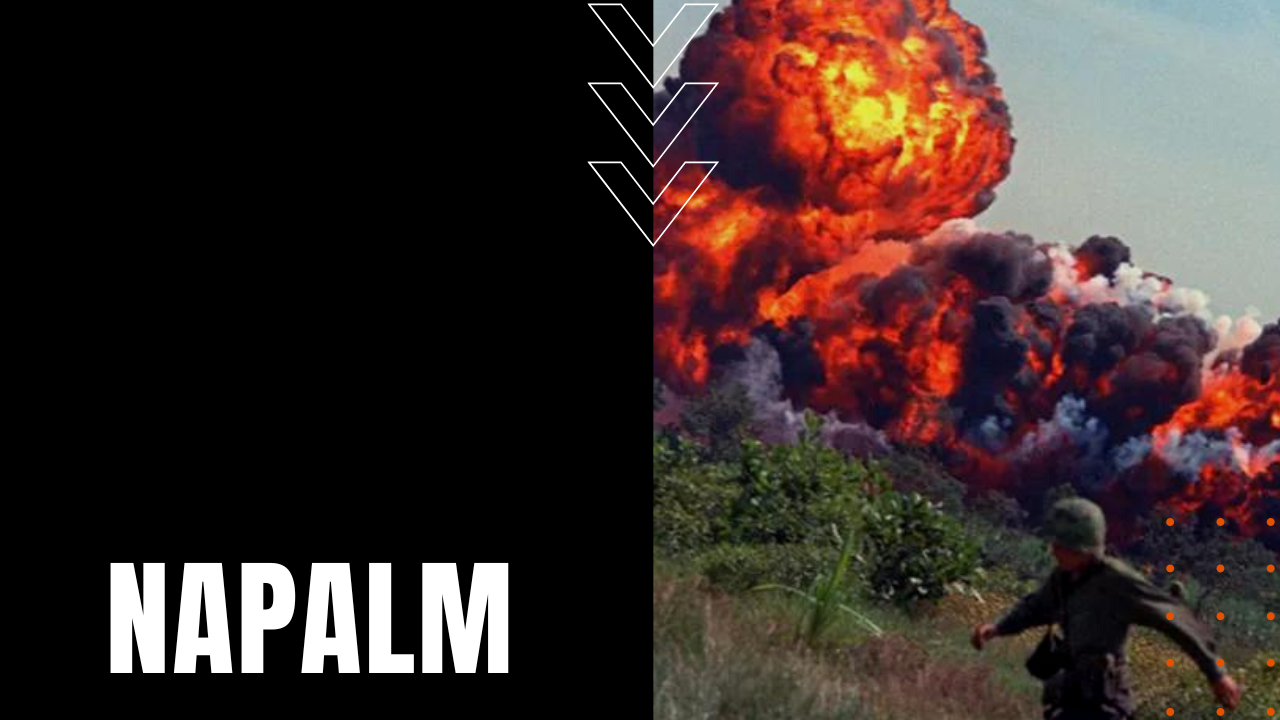Napalm and the Vietnam War

During the First World War, flamethrowers spewed ignited gasoline on enemy combatants, which proved to be of minimal effectiveness, since gasoline burned out quickly. To remedy the deficiency, the U.S. Chemical Warfare Service added rubber to gasoline, producing a jelly-like mixture that burned longer and stuck to enemy combatants with more fatal consequences, but when rubber became a scare
Created by Harvard Scientist
commodity during World War Two—particularly in the Pacific—a team of Harvard chemist led by Louis Fieser developed a mix of naphthenic and palmitic acids, creating a hideous yet highly effective jellied liquid that burned at 2,000 degrees Fahrenheit and stuck to human skin like glue, at the same time creating suffocating carbon monoxide gas, much like Zyclon-B, which was the Nazi’s gas of choice for
Manufactured by the Dow Company
exterminating Jews and political dissidents in World War Two concentration camps. In 1965, The Dow Company—best known for their kitchen wonder product, Saran Wrap—began making napalm in mass quantities for use in the Vietnam War, raising chemical warfare to new heights of inhumanity, yet despite its obvious cruelty, napalm proved to be a highly effective weapon. From 1963 to 1973, 388,000 tons of napalm was dropped on Vietnam, compared to 32,357 tons used during the Korean War and a mere
Horrid Death for Victims
16,500 tons used in World War Two, covering victims both civilian and military, with a viscous magma the consistency of tar, causing burn wounds generally too great for a victim to survive. First deployed during the early years of the Vietnam War in flamethrowers and flame-throwing tanks, as the war dragged on, U.S. war planners switched to carpet bombing that could leave an area as large as 2,500 square yards engulfed in unquenchable fire. Accuracy, however, proved to be an illusive objective, causing untold
A form of Psychological Warfare
casualties to civilian populations in Vietnam, at the same time creating one of the most impactful weapons in the history of psychological warfare. As media coverage of the Vietnam War intensified in the United States, napalm became a rallying point for antiwar protesters, calling for a boycott of The Dow Company beginning as early as 1966. After the Fall of Saigon in 1975, five years later, the United Nations declared the use of napalm against concentrations of civilians a war crime, making napalm, one of the worst inhumanities of chemical warfare.
